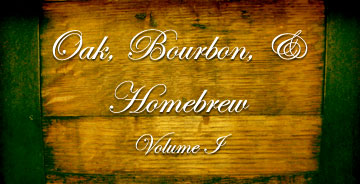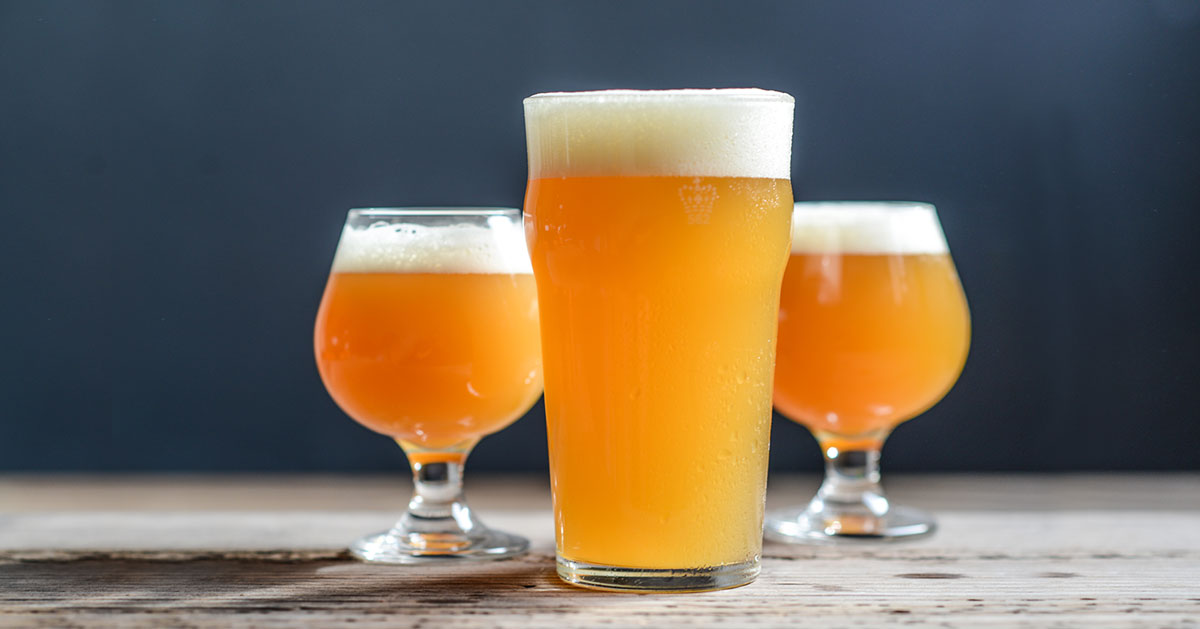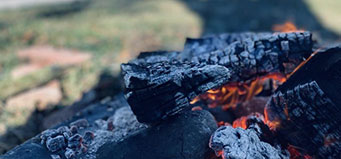Oak, Bourbon, and Homebrew Volume I

Aging beer in oak barrels is something that has been done for many situations, but it seems the popularity of oak aged beers has really soared in the last few years. From traditionally oaked sours from the Flanders region, British cask conditioned real ales, beers aged in used Cabernet barrels, or giant Russian imperial stouts with vanilla beans matured in 23 year Pappy Van Winkle bourbon barrels, it’s clear that the right application of oak can add tremendous depth and complexity to beers.
Unfortunately for homebrewers, it’s not very realistic to keep a 55 gallon oak barrel sitting in your basement. It’s big, it’s heavy, it’s a heck of a lot of beer for a homebrewer, and chances are it’s not going to be looked upon fondly by spousal units (just tell them you’ll turn it into a table afterwards)!
So what’s a creative homebrewer to do? Use oak chips or cubes to achieve the same complex beers at home!
Oak Forms
Oak is available in several forms to the homebrewer, and it’s good to know the differences so you can plan what method best suits your needs.
Oak chips are what they sound like; relatively flat pieces of oak generally around 2 in. long or so. Since they’re thin, the toast level is generally consistent throughout, and the high surface area means the oak characteristics are imparted quicker than cubes, making them ideal for styles that aren’t aged long such as English bitters or IPAs.
Oak cubes are small cubes, typically in the ½ – ¾ in. range. Since they’re significantly thicker than chips, and the level of toast varies throughout the cube, the final flavor is much more complex and better simulates a barrel. Cubes have a smaller surface area than chips and are thicker, so it can take up to a year to get the full spectrum of flavors available, making them well suited to styles like barley wine, Russian imperial stout, and sours.
Oak spirals and oak dust are also used on occasions, but in my eyes they’re better suited for home vintners and don’t offer much of an advantage to homebrewers.
Oak Types
There are three different varieties of oak available, American, French, and Hungarian, each imparting their own characteristics and flavors.
Perhaps used most regularly in brewing, American oak provides a pleasant sweetness, along with great vanilla notes. Darker toasts can have some coffee notes, and impart great mouthfeel and body. The vast majority of whiskeys are aged in American oak, so it’s a good bet if soaking cubes in whiskey.
French oak is generally more subdued than American oak, but imparts even more mouth feel. Look for spice characteristics (cinnamon and allspice are most prevalent), and minor chocolate and fruit notes in darker toasts.
Hungarian oak is known for its vanilla characteristics, with roasted coffee and chocolate notes increasing with the toast level. Mouthfeel and body is somewhere in between American and French oak, and darker toasts can show black pepper notes as well.
Oak Toast Levels
Oak comes in different toast levels, the most available being medium, medium+, and heavy toast. Typically, lower toasts impart more mouthfeel and “woody” notes, while higher toasts bring out more spice, vanilla (through medium+), and sweet (ranging all the way to butterscotch) notes. Medium+ typically is the most complex of toast levels.
So how the heck do I use it in my homebrew?
Sanitizing oak can be a little tricky, there are plenty of sour and funk producing bugs that absolutely love to live in wood, so it’s quite a necessary step. The easiest method I’ve found is to put the oak in a Pyrex measuring cup with a microwave safe plate over the top, and add enough distilled water to cover the oak. Bring the water to boil for 30 seconds, and then let the oak steam in the microwave for two minutes. Repeat the process a total of three times, and your oak should be sanitized.
If you’re just using the oak by itself, I have always pitched the water from the measuring cup into the beer along with the oak to maximize the woody goodness. If trying to mimic beer aged in used spirit or wine barrels, drain the water used to boil the chips, then put the sanitized oak into a sanitized measuring cup and pour in enough spirits to cover them completely. Cover the measuring cup with Saran Wrap to keep the fruit flies out, and let it soak for a couple of weeks, adding additional booze if need be due to evaporation (excess sampling).
While whisky aged beers are perhaps best known, I’ve had some incredible beers aged in wine barrels (both red and white), as well as brandy, port, sherry, and even rum barrels. There are lots of possibilities, many of them under-used, so don’t be afraid to pick your favorite spirit and give it a shot.
Oak can be used in a variety of ways, but it’s most commonly used in secondary fermentation. Chips or cubes can be put into a muslin bag or dumped straight into a carboy (or keg); I’ve had good results with both methods. Depending on how long you keep the beer in contact with the oak, it will eventually sink to the bottom and can be easily racked off of.
The most important point to remember when oaking beers is that the oak should never be the main character of the beer. The flavors should be complementary and well balanced. Picking the method of oak you use, nationality, and toast level all are important, as is the contact time and particular spirit you use to soak the oak in (if that’s your thing). It should complement your recipe, not overwhelm it.
How long should I age with oak?
People ask me how long they should leave the beer on oak, and my answer is always “until it’s finished”. There are no hard and fast rules, so you’re just going to have to take regular samples. Sometimes this hobby can be hard. A thief is pretty much necessary, as are good sanitation practices. Keep in mind that oak flavor can be easy to get into the beer, but once in, it’s almost impossible to reduce the level. The first beer I ever threw out was a bourbon aged Porter that got over oaked. I put it in a keg and let it sit in the basement for a year, and it was nearly as undrinkable a year later as it was when I first kegged it.
I hope this post has helped you to gain that bit of confidence needed to give oak a shot, and not to fear it! Remember that even if you don’t get it right the first time to keep at it. No one became a good homebrewer by hitting a homerun with every batch :) As always, if you have any questions, we here at Great Fermentations are always here to help, so just stop in, give us a call, or shoot us an email.
Look for an upcoming blog post on using oak barrels, both full size and miniature.


